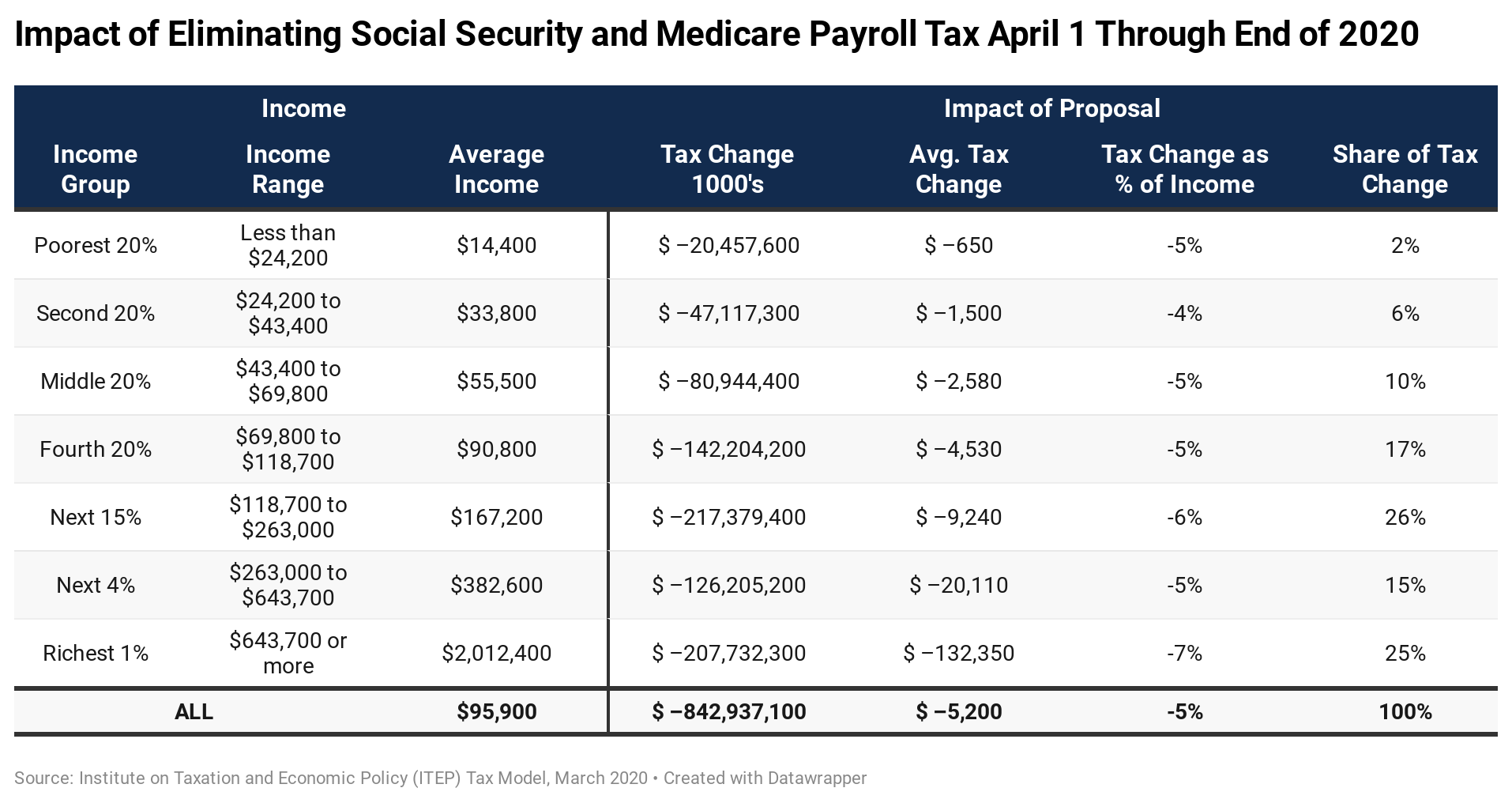Earlier this week, ITEP analyzed what would happen if Congress and the President repeated the 2 percentage-point cut in the Social Security payroll tax that was enacted for two years during the last recession. Little did we know that President Trump was about to propose something far more radical: eliminating all Social Security and Medicare payroll taxes for the rest of the year.
A new report from ITEP concludes that this proposal is even more poorly targeted to people who need help and far more costly.
ITEP’s analysis finds that the president’s payroll tax cut would cost $843 billion and that 65 percent of the benefits would go to the richest 20 percent of taxpayers.
Our cost estimate for this proposal is in the same ballpark as the one recently produced by the Penn Wharton Budget Model (PWBM). But we find that the benefits would be much more concentrated on the richest 20 percent. The main reason for this is how we assess eliminating employer payroll taxes. PWBM assumes that employers will immediately pass the tax savings onto workers. We find that unrealistic and instead believe that the cut in the employer side of the payroll taxes will produce a windfall to corporations and other businesses, as our report explains.
It should go without saying that right now we should be discussing test kits, not tax cuts. But, when Congress has addressed the health crisis and turns to addressing the economic fallout, policymakers will need to think clearly about what will boost the economy. Measures like expanded unemployment insurance or nutrition assistance, which put money in the hands of people who are likely to spend it right away and pump it back into the economy, are more likely to counteract a downturn than tax cuts that mostly benefit the richest 20 percent of taxpayers.






